Kidwelly is an ancient town, sat in a prominent position overlooking the River Gwendraeth and Carmarthen Bay, at a position thought important enough by the Normans to build the impressive castle which still stands today. This page commemorates the men of the ancient Town of Kidwelly who gave their lives in both World Wars. Some of the men listed below are not on the War Memorial, but I have included them as they had links to Kidwelly. The same names are inscribed on two marble war memorials which are located inside the Parish Church.
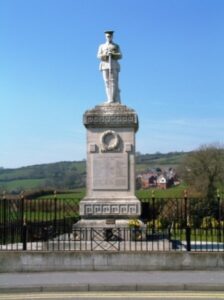
The Great War, 1914-1918
William James Anthony, Private, 54593, Welsh Regiment. William was the son of John and Ann Anthony, of Llangadog, Kidwelly. William enlisted at Carmarthen into the 13th Battalion, Welsh Regiment, which was attached to 114 Brigade, 38th (Welsh) Division. The Division had landed in France during December 1915 and had spent their first winter in the trenches near Armentieres. In June they marched south to the Somme, where they famously captured Mametz Wood in July 1916. The Division suffered terrible casualties at Mametz, and were taken out of the line, and moved to Ypres to rebuild. Here they fought at Pilckem and Langemarck in July and August 1917, then moved to Armentieres, where they remained from September 1917 until March 1918 when the German Spring Offensive was launched. The British had been over-run on the Somme, and so in April the Division was moved south, taking up positions North of Albert, from where they weathered the storm of the coming months, until the war turned during the Battle of Amiens, on 8 August 1918. The Germans had now lost the upper hand, and the British regained the lost ground on the Somme after an attack which began on 21 August 1918, with the 38th Division in the midst of the attack during the Battle of Albert, and then moving east, where they fought at the Battle of Bapaume. Then the move began towards the mighty Hindenburg Line, and the Division carried on with their march east, fighting at the Battle of Havrincourt, and the Battle of Épehy. A short rest period ensued, during which time the Canal du Nord was breached, so opening a passage through the Hindenburg Line. The Division then fought at the Battle of Beaurevoir, and moved up towards Cambrai, capturing Villers-Outreaux, before advancing to the Selle. William was taken ill at some time around the Hindenburg Line battles. He was brought back to a Base Hospital on the Channel coast near Boulogne for treatment, but sadly died on 21 October 1918. He was just 22 years old, and is buried at Terlincthun British Cemetery, Wimille, France.
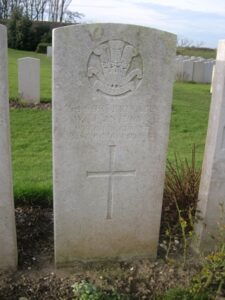
John Bidgood Godfrey Ashford, Private, 41211, Dorsetshire Regiment. John was the son of William Samuel and Mary Jane Ashford, of Exonia Villa, Kidwelly. He had been born in Exmouth, and had enlisted at Exeter into the army. He was posted to France, where he joined the 6th Battalion, Dorsetshire Regiment, attached to 50 Brigade, 17th (Northern) Division. The Division had moved to France in July 1915, and spent their initial period of trench familiarisation and then holding the front lines in the southern area of the Ypres salient, where they saw fighting at the Bluff during February 1916. They then moved south, where they fought at the Battle of Albert, and captured Fricourt at heavy cost during the opening of the Somme Offensive. The Division then saw action during the Battles of Arras, before moving back to Ypres, and taking part in the First and Second Battles of Passchendaele. In March 1918 the Division was on the Somme, and faced the German Spring Offensive there, fighting at the Battle of St Quentin, and retreated back, fighting at the First Battle of Bapaume. After a period out of the line to rest and rebuild, the Division moved to the southernmost sector of the Somme area, where they took part in the Battle of Amiens on 8 August 1918, a day which saw the war swing in the favour of the Allies. The Allies then advanced on the Somme, and the Division fought at the Battle of Albert later that month, taking part in the drive to the Hindenburg Line. At the beginning of October 1918 the mighty Hindenburg Line was broken, and the 17th Division swept past Cambrai, and north-east towards the Forest of Mormal. The Division fought in tandem with the 38th Welsh Division, and here launched the Battle of the Selle during the middle of October. John was wounded at the Selle, and sadly died of wounds on 30 October 1918. He was just 19 years old, and is buried at Awoingt British Cemetery, France. John is not commemorated at Kidwelly.
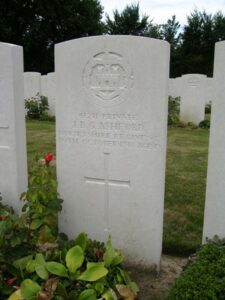
Edgar James Bish, Lance Corporal, 16072, Welsh Regiment. Edgar was born in Kidwelly on 31 October 1893, the son of Robert Andrew and Agnes Bish. The family had lived at Kidwelly for over 20 years, after Edgar’s Grandfather had brought them down from Lincolnshire, working as a Coachman. Edgar later moved with his parents to 67, Mansel Street, Port Talbot, where Edgar became a Fireman with the Great Western Railway. He enlisted at Cardiff into the 11th Battalion, Welsh Regiment, which was known as the Cardiff Pals. The Battalion formed at Cardiff during September 1914, and moved to South Downs in 67 Brigade, 22nd Division. In December 1914 they moved to Hastings and in April 1915 to Seaford. In May 1915 they moved to Aldershot, and from there landed at Boulogne on 6 September 1915. However it’s stay in France was to be very short, as on 27 October 1915 the Division began to embark for Salonika. It completed concentration there in November, and remained here for the remainder of the war. During August 1916 they fought at the battle of Horseshoe Hill, then in September 1916 at the battle of Machukovo. Between April and May 1917 the Division fought at the battle of Doiran, and then on 18 September 1918 at the Second Battle of Doiran. Edgar was killed in action that day aged 24. He has no known grave, and so he is remembered on the Doiran Memorial, Greece. Edgar is not commemorated at Kidwelly.
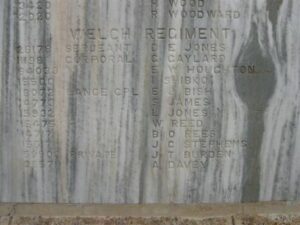
William Bowry, Private, 57654, Royal Welsh Fusiliers. William was born in London, and was probably the twin brother of Charley Bowry. At some time prior to the war, both boys had moved to Carmarthenshire, William becoming a cowman for David Griffiths, at Llechdwrog, Kidwelly, and Charley working for a David Griffiths at Llangadog. When war broke out he enlisted at Llanelli into the South Wales Borderers. Later he transferred to the 16th Battalion, Royal Welsh Fusiliers, who had been in France since December 1915 attached to 113 Brigade, 38th (Welsh) Division. In June they marched south to the Somme, where they famously captured Mametz Wood. The Division suffered terrible casualties at Mametz, and were taken out of the line, and moved to Ypres to rebuild. Here they fought at Pilckem and Langemarck, then moved to Armentieres, where they remained from September 1917 until March 1918, when the German Spring Offensive was launched. The British had been over-run on the Somme, and so in April the Division was moved south, taking up positions North of Albert, from where they weathered the storm of the coming months, until the war turned during the Battle of Amiens, on 8 August 1918. The Germans had now lost the upper hand, and the British regained the lost ground on the Somme after an attack which began on 21 August 1918 with the 38th Welsh in the midst of the attack over the old Somme Battlefields. William was killed just days into the offensive, on 26 August 1918. He is buried at Flatiron Copse Cemetery, Mametz, France.
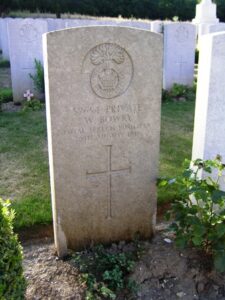
David Morris Davies, Lance Corporal, 18624, Royal Welsh Fusiliers. David was born in Kidwelly in 1896, the son of David and Ceridwen Davies, of 29, Ferry Road. He enlisted at Llandudno into the 16th Battalion, Royal Welsh Fusiliers, who were attached to 113 Brigade, 38th (Welsh) Division. The Division landed in France in December 1915, and took part in the famous capture of Mametz Wood in July 1916. After being relieved from Mametz, the Division moved via Hebuterne to Ypres, taking up positions north of the city, at Boesinghe. David was wounded at Ypres, and returned to Britain for hospital treatment. He died of wounds in hospital at Christchurch, Hampshire on 7 August 1917, and was brought home to be buried at Kidwelly (Siloam) Welsh Baptist Chapelyard.
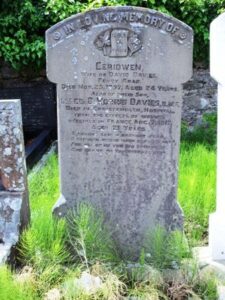
Frank Davies, Pioneer, WR/262339, Royal Engineers. Frank was the son of Thomas and Sarah Davies of West End Street, Kidwelly. He married May Hughes at Kidwelly on 3 November 1908, and the couple raised three children at Pencastle, Water Street. Frank enlisted at Carmarthen into the Liverpool Regiment. He later transferred into the Royal Engineers, serving with the Railways section in France from 23 December 1916. The RE Railways ran the rail supply networks on the Western Front, carrying supplies, ammunition and men to and from the front line. Frank was killed on the railway line between Nuits-St. Georges and Dijon on the morning of 10 September 1918. He was buried with full military honours by the French at Nuits-St. Georges New Communal Cemetery, France.
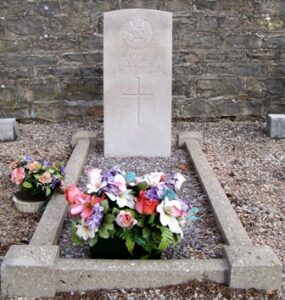
William Evan Davies, Rifleman, 5898, London Regiment. William was the son of Morris and Elizabeth Davies, of Ferry Road, Kidwelly. He was employed at London prior to the war, and enlisted there into the 1/9th Battalion (Queen Victoria’s Rifles), London Regiment. On 5 November 1914 the battalion landed in France, and became attached to 13 Brigade, 5th Division. The Division had landed at Havre on 15 August, 1914, and fought at the Battle of Mons, and during the retreat south, fighting at Le Cateau, then down to the Marne where the German attack was halted. They took part in the advance to the Aisne, before moving to Flanders, where they fought at the Battle of La Bassée, then at Messines in October, 1914. They fought here through First Ypres, and took part in the capture of Hill 60, and then fought at Second Ypres in April 1915. On 10 February 1916 the battalion was transferred to 169 Brigade, 56th (London) Division. The Division fought at the diversionary attack on Gommecourt then at Ginchy, Flers and Morval, where they captured Combles. William was killed during the Battle of Le Transloy on 9 October 1916. He has no known grave, and is commemorated on the Thiepval Memorial, France.
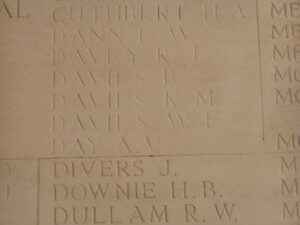
William Howard Davies, Private, 116422, Machine Gun Corps. William was born at Kidwelly in 1892, the son of William and Elizabeth Davies. He enlisted at Pembrey into the 2nd Battalion, South Wales Borderers, but was later posted to the 21st Company, Machine Gun Corps which was attached to the 30th Division. William may have just caught up with the Division to serve in the Somme Offensive, and in March 1917 the Division followed the German retreat to the Hindenburg Line. It was here that they took part in the Battles of Arras, fighting at the Scarpe, before they moved north to Ypres. Here they fought at Pilckem Ridge, before moving south again to the St. Quentin sector. They were here in March 1918 when the German Spring Offensive swept over the area, and William was taken prisoner by the Germans. Sadly he had been wounded when he was captured, and he Died of Wounds on 15 October 1918 as a POW. William is buried at Cologne Southern Cemetery, Germany.
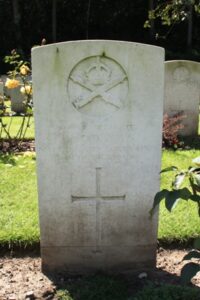
William Stanley Davies, Private, 25166, West Riding Regiment. William was the son of David and Elizabeth Davies, of 57, Hillfield, Station Road, Kidwelly. He worked as a shell filler at Pembrey prior to enlisting at Llanelli into the Army Service Corps on 11 December 1915. William later transferred into the 10th Battalion, West Riding Regiment, which was attached to 69 Brigade, 23rd Division. William joined the battalion in France during June 1917, and saw his first major action at the Battle of the Menin Road. Sadly William was wounded here, being shot in the head on 21 September. He was transported back to the Casualty Clearing Station at Remy Sidings where he died of wounds on 25 September 1917. He was 24 years old, and is buried at Lijssenthoek Military Cemetery, Belgium. William is not commemorated at Kidwelly.

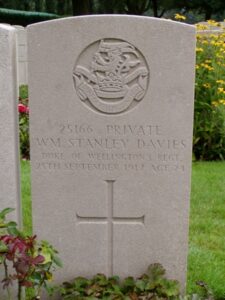
David Edmunds, Master, Mercantile Marine. David was born at Burry Port, the son of Joseph and Mary Edmunds. He married Elizabeth Randell at Kidwelly in 1902, and the couple lived at The Grove, Kidwelly. David served in the Mercantile Marine, as Master of the SS Tangistan. David was drowned when the Tangistan was torpedoed off Scarborough on 9 March 1915 by a German submarine. He was 44 years old, and is remembered on the Tower Hill Memorial, London. David is stood to the right, with his parents, wife and daughter.
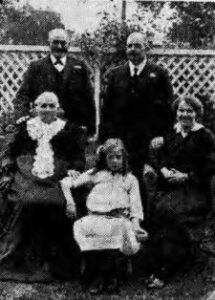
Owen Lucius Edwards, Private, 54190, Welsh Regiment. Owen was the son of John and Mary Edwards, of Sea View, New Street, Kidwelly. He enlisted at Kidwelly into the 16th Battalion, the Welsh Regiment, attached to 115 Brigade, 38th (Welsh) Division. The Division had landed in France during December 1915 and had spent their first winter in the trenches near Armentieres. In June they marched south to the Somme, where they were tasked with the capture of Mametz Wood. The attack on the wood began on 7 July, but met with fierce resistance, and it took until 14 July to clear the wood. The Division suffered terrible casualties at Mametz, and were taken out of the line, and moved to Ypres to rebuild. Owen was probably wounded at Boesinghe, as he is recorded as having died of wounds at the Norwich Military Hospital on 13 March 1917. He was just 22 years old, and is buried at Kidwelly (St. Mary) Churchyard.
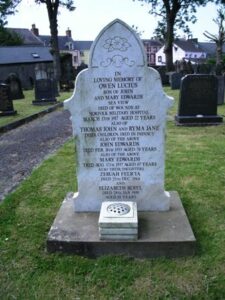
Ivor Emanuel, Lance Corporal, 275, Welsh Guards. Ivor was born in 1892, the son of John Emanuel and Mary Emanuel (nee Treharne), of Morlais Isaf Farm, Trimsaran. He married Prudence Paulfrey Richards, of Brynygraig, Mynyddygarreg in 1915. He worked as an electrician at the Trimsaran Collieries prior to enlisting at Llanelli into the Grenadier Guards, but then transferred into the 1st Battalion, Welsh Guards. The Regiment had been raised by Royal Warrant of 26 February 1915, at White City, before landing at Le Havre on 18 August 1915, becoming attached to 3rd Guards Brigade, Guards Division. The Division saw its first major action during the Battle of Loos, which began on 25 September 1915. During the opening day, the Guards Division began moving into position, watching the terrible scenes in front of them, before launching its own attack on the following morning. At around 18.00 that day the Welsh Guards received orders to attack a feature called Hill 70, and as the men slowly made their way forwards, darkness fell. As soon as the battalion reached the top of the Hill, German machine-gunners opened up a murderous fire on them, forcing the men to dig into the many shell holes littering the crest, before retiring to positions just below of the crest, where the survivors dug-in. Ivor was killed in action at Hill 70 on 27 September 1915. The 23-year-old has no known grave, and so is commemorated on the Loos Memorial, France. His daughter, Ivorine Emanual, served during the Second World War as a Sister with Queen Alexandra’s Imperial Military Nursing Service, whilst his brother Joseph won the Military Medal whilst serving with the Welsh Guards near the end of the war.
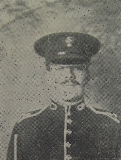
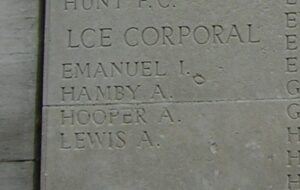
Edward Idris Evans, Sergeant, 49945, Royal Welsh Fusiliers. Idris was born in 1890, the son of William Evans and Rhoda Martha Evans (nee Davies), of Penygare, Kidwelly. He enlisted at Kidwelly on 3 September 1914 into the 9th Battalion, Welsh Regiment, which was attached to 58 Brigade, 19th Division. The battalion landed in France on 18 July 1915, moving to positions near Festubert. It took part in the opening attack of the Battle of Loos on 25 September 1915. Idris was promoted to Sergeant that day, after having showed good leadership qualities during the disastrous attack. The following year the Division moved to the Somme, where it took part in the second wave of the attack on Ovillers-La Boiselle on 1 July. It then fought through Battles of Pozieres and the Ancre in 1916. Idris was wounded on the Somme, and invalided home, being posted to the Depot Battalion at Cardiff after recovering. When he was sent back to France on 11 August 1917 he was transferred to the 9th Battalion, Royal Welsh Fusiliers, in the same brigade as his old unit. Idris caught up with his new battalion at Ypres, in time to take part in heavy fighting, at the Battle of Passchendaele. For his bravery during the fighting at Ypres, Idris was awarded the Military Medal, the award of which was published in the London Gazette of 17 December 1917. In 1918 the division was caught up in the German Spring Offensive near St. Quentin, where they suffered terrible casualties, during a brave rearguard action near Bapaume. Idris was wounded here on 25 March 1918, and was invalided home. While in hospital recovering from his wounds, a persistent cough which he had developed in France was found to be tuberculosis, so Idris was discharged from the army on 30 August 1918. He died of tuberculosis at 2, Priory Street, Kidwelly on 1 November 1919, aged 29 years, and was buried with full military honours at Capel Sul Chapelyard. Edward has just been accepted for commemoration by the CWGC (Saturday 5 April 2014).
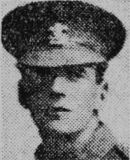
Oliver Evans, Lance Corporal, 42224, Royal Welsh Fusiliers. Oliver was the son of William and Lucy Evans, of Greyhound, Lady Street, Kidwelly. He enlisted at Llanelli into the 9th Welsh, and later transferred into the 13th Battalion, Royal Welsh Fusiliers. The Battalion were attached to 113 Brigade, 38th (Welsh) Division, which had landed in France during December 1915. The Division had spent their first winter in the trenches near Armentieres, and in June 1916 marched south to the Somme, where they famously captured Mametz Wood. The Division suffered terrible casualties at Mametz, and were taken out of the line, and moved to Ypres to rebuild. Here they fought at Pilckem and Langemarck, then moved to Armentieres, where they remained from September 1917 until March 1918 when the German Spring Offensive was launched. The British had been over-run on the Somme, and so in April the Division was moved South, taking up positions North of Albert, which is where Oliver was killed in action, aged 30, on 22 April 1918. He has no known grave and so is remembered on the Pozières Memorial, France.
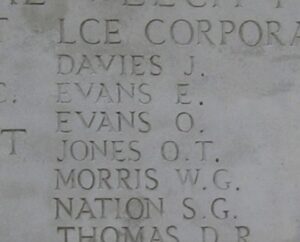
Alexander Gilasbey, Private, 285143, Welsh Regiment. Alexander was born in Kidwelly, the son of Alexander and Frances Gilasbey. He married Kate Lane in 1902, and the couple lived at 5, St. Mark’s Place, Bath. He enlisted at Bath into the army, and was posted to France, where he joined the 10th Battalion, Welsh Regiment, attached to 114 Brigade, 38th (Welsh) Division. The battalion had been in France since December 1915. Alexander probably joined up with them at Boesinghe, after their withdrawal from the carnage of Mametz Wood in July 1916. The Division had moved via Hebuterne to Ypres, where they rested and rebuilt back up to full strength in preparation for taking part in the Battle of Pilckem Ridge on 31 July 1917. Alexander was killed in action at Ypres on 4 September 1917, after the Division had fought at Pilckem and Langemarck. He was 35 years old and is buried at Bard Cottage Cemetery, Belgium.
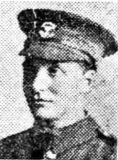
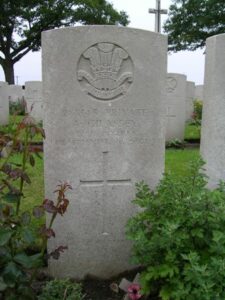
David Gower, Private, 13462, Welsh Regiment. David was the son of David and Mary Gower, of 38, Gwendraeth Town, Kidwelly. He enlisted at Llanelli into the 9th Battalion, Welsh Regiment, who were attached to 58 Brigade, 19th (Western) Division. The Division assembled around Bulford during September 1914. Divisional training was completed near Tidworth, from March 1915, and the Butterfly Division crossed to France between 11 and 21 July 1915, and remained on the Western Front throughout the war. The Division fought at the Battle of Loos, and were still in the area when David was accidentally killed on 23 November 1915, possibly through grenade training. He was 20 years old, and is buried at Chocques Military Cemetery, France.
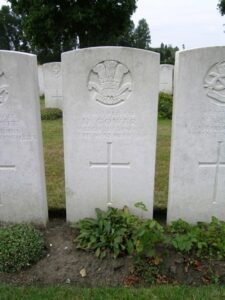
David Griffiths, Private, 54198, Welsh Regiment. David was the son of John and Mary Griffiths, of Cwmffynonau, Kidwelly. He enlisted at Carmarthen into the army, and was posted to France, where he joined the 16th Battalion, Welsh Regiment, attached to 115 Brigade, 38th (Welsh) Division. David probably joined the battalion after it had taken part in the capture of Mametz Wood in July 1916, and had been moved via Hebuterne to Ypres. David was wounded at Boesinghe, and was taken to the Casualty Clearing Station at Proven where he died of wounds on 9 February 1917, aged 20. David is buried there, at Mendinghem Military Cemetery, Belgium. He is not commemorated at Kidwelly.
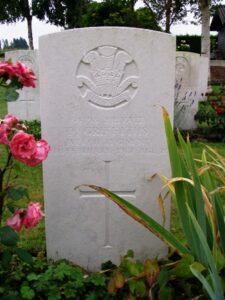
William John Griffiths, Private, G/5825, Royal Sussex Regiment. William was born at Mynyddygarreg in 1895, the son of William and Sarah Griffiths. The family were living at Llanelli by 1901, and William enlisted at Llanelli into the army. He was posted to the 9th Battalion, Royal Sussex Regiment, which was attached to 73 Brigade, 24th Division. The Division moved to France during August 1915 and marched to positions near Loos, where they took up reserve positions for the main Battle of Loos. They were sent into battle on 25 September 1915 at Loos and suffered terrible casualties due to not being properly trained for battle, and were pulled from the line until the following year. William was one of these men killed that day. He is commemorated on the Loos Memorial, France. William is not commemorated at Kidwelly.
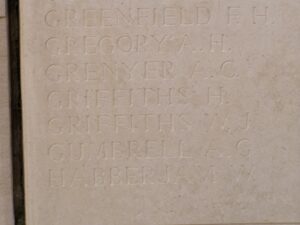
David John Howells, Private, 202759, Welsh Regiment. David was the son of Philip and Eleanor Howells, of Maes Gwenllian, Kidwelly. He served with the 18th Battalion, Welsh Regiment, who were attached to 119 Brigade, 40th (Bantam) Division. This Division was formed between September and December 1915, and moved to France between in June 1916. Late in 1916 they moved south to the Somme, and fought at the Battle of the Ancre, and remained in the area over the winter. In March 1917 the Germans withdrew to their shortened line, called the Hindenburg Line, and the 40th Division were one of the Divisions that followed the withdrawal. Later in the year they took part in the Battle of Cambrai, playing an important role in the attack on Bourlon Wood. They remained in the area over the coming months, but were caught here by the German Spring Offensive of 21 March 1918, and fought there at the Battle of St Quentin and retreating back westwards fought at the First Battle of Bapaume. Due to the terrible casualties suffered by the Division here they were sent north to Flanders to rest and rebuild, but in April the Germans launched an offensive in Flanders, and the 40th Division were caught up in the thick of it again, fighting at the Battle of Estaires, and then at the Battle of Hazebrouck. The Division was ready for front-line action again by 18th July 1918, when they took part in the Advance in Flanders, and the Battle of Ypres, 1918. David was taken ill during the final months of the war, and was brought to the Base Hospital near Boulogne, where he died aged 32 on 31 December 1918. He is buried at Terlincthun British Cemetery, Wimille, France.
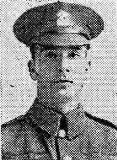
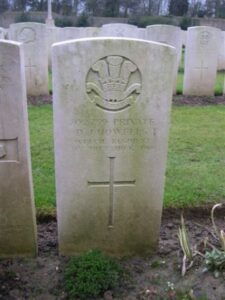
Henry George Howells, Rifleman, 1976, Royal Irish Rifles. Henry was born at Kidwelly in 1896, the son of George and Sarah Ann Howells. The family lived at 7, Francis Terrace for over ten years prior to moving to Pontardawe, and Henry enlisted there into the Welsh regiment. He was then posted to the 6th Battalion, Royal Irish Rifles, which was attached to 29 Brigade, 10th (Irish) Division. The Division embarked at Liverpool on 9 July 1915, and on 6 August 1915 landed on Gallipoli at Suvla Bay, less 29 Brigade, which went to ANZAC Cove. At the end of September the Division evacuated to Mudros, and moved to Salonika, landing there from 5 October 1915. On 18 August 1917 the Division was ordered to concentrate at Salonika for embarkation, and moved to Egypt by 16 October 1917. The Division was then involved in the Palestine campaign. Henry was wounded in Palestine, and died at Jerusalem on 17 June 1918, aged 22. He is buried at Jerusalem War Cemetery, Israel. Henry is not commemorated locally.

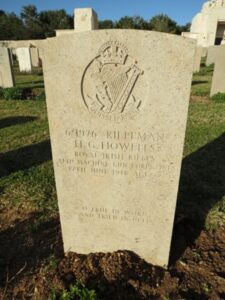
Augustus Edward Hugh, Private, 45307, Welsh Regiment. Augustus was the son of David James and Charlotte Hugh, of Bay View, Station Road, Kidwelly. He enlisted at Haverfordwest into the 8th Battalion, Welsh Regiment, who were attached to 40 Brigade, 13th (Western) Division. The Division concentrated at Blackdown in Hampshire, and on 13 June 1915 left Britain for Alexandria. By 4 July1915, the Division moved to Mudros, then landed at Gallipoli between 6 and 16 July 1915, relieving the 29th Division. They left and returned to Mudros at the end of the month, and the entire Division landed at ANZAC Cove from 3 August 1915, taking part in the Battles of Sari Bair, Russell’s Top, and Hill 60, ANZAC. Soon afterwards the Division was transferred from ANZAC to Suvla Bay, and it was evacuated from Suvla on the 19th December 1915, whereupon the infantry moved after a weeks rest to the Helles bridgehead, where they faced the last Turkish attacks at Helles. On 8 January 1916, the Division was evacuated from Helles, and by 31 January was concentrated at Port Said, where they held forward posts in the Suez Canal defences. On the 12th February 1916 the Division began to move to Mesopotamia, to strengthen the force being assembled for the relief of the besieged garrison at Kut al Amara. Augustus was killed in action during the advance into Mesopotamia on 14 January 1917. He was 36 years old and is buried at Amara War Cemetery, Egypt.
David Hughes, Private, 14762, South Wales Borderers. David was the son of John and Margaret Hughes, of Kidwelly. He married Mary Emily Musk at Seven Sisters in 1907, and the couple lived at 20, Bryndulais Row, Seven Sisters. David worked at the Yniscedwen Tinplate Works at Ystalyfera prior to the war, and enlisted at Ystradgynlais into the 2nd Battalion, South Wales Borderers. The battalion had begun their war in China, where they captured the German Garrison at Tientsin. The Battalion returned to England where they joined 87 Brigade, 29th Division. The Division moved to Gallipoli via Egypt, landing on 25 April 1915. They remained here until evacuation to Egypt on 11 January 1916, and then moved to the Western Front on 15 March 1916. David was killed in action soon after, during the battalions first spell in the trenches, on 6 April 1916, aged 30. He is buried at Mesnil Ridge Cemetery, Mesnil Martinsart, France. Two of his brothers also fell; Sam and Willie Hughes.

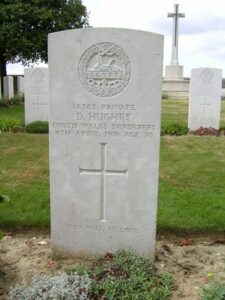
Samuel Hughes, Private, 12535, Royal Welsh Fusiliers. Samuel was the son of John and Margaret Hughes, of Kidwelly. He married Beatrice Jones in 1912, and the couple lived at 14, Gwendraeth Town, Kidwelly. Samuel enlisted at Llanelli into the 8th Battalion, Royal Welsh Fusiliers, who were attached to 40 Brigade, 13th (Western) Division. The Division had fought at Gallipoli, Egypt and Mesopotamia during the war, and were in Mesopotamia when Samuel took ill. He came home for treatment, but sadly died of sickness on 12 March 1918, aged 27, and is buried at Kidwelly (St. Mary) Churchyard. Many thanks to Diane Williams for the photograph of Samuels’ grave. His brothers David and Willie also fell.

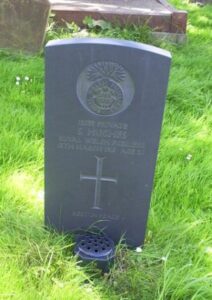
William Henry Hughes, Private, 35648, Machine Gun Corps. William was born in Kidwelly in 1886, the son of John and Margaret Hughes. He married Mary Anne Morgan in 1906, and the couple lived at 52, Water Street, Kidwelly. William enlisted at Carmarthen into the Gloucestershire Regiment. He later transferred into the 5th Battalion, Machine Gun Corps, who were attached to the 5th Division. The Machine Gun Corps had been formed prior to the 1916 Somme Offensive which opened on 1 July 1916. The 5th Division fought on the Somme at High Wood, Guillemont, Flers-Courcelette, Morval and Le Transloy. On 5 October 1916, after suffering heavy casualties, the Division moved to Festubert, where they remained until March 1917. They next saw action at the Battle of Arras, fighting at the Battle of Vimy in April 1917, which is where William was killed in action on 16 April 1917. He is buried at Bois-Carre British Cemetery, Thelus, France. His brothers David and Samuel also fell.

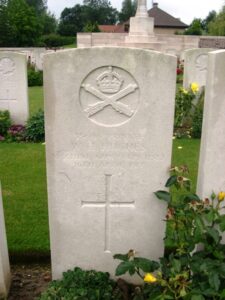
William James, Private, 31684, Royal Welsh Fusiliers. William was born in 1887, the Eldest son of James and Mary James, formerly of Upper Mill and later of Gwendraeth Place, Kidwelly. He enlisted at Llanelli into the 13th Battalion, Royal Welsh Fusiliers, who were attached to 113 Brigade, 38th (Welsh) Division. The Division had landed in France during December 1915 and had spent their first winter in the trenches near Armentieres. In June they marched south to the Somme, where they had captured Mametz Wood in July 1916. The Division suffered terrible casualties at Mametz, and were taken out of the line, and moved to Ypres to rebuild. Here they fought at the Battle of Pilckem, which is where William was killed in action on 31 July 1917. He is buried at Dragoon Camp Cemetery, Belgium.
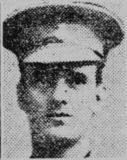
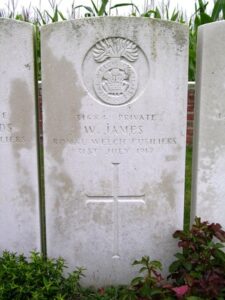
Sidney Morris Jenkins, Corporal, 139015, Royal Engineers. Sidney was the son of David and Jane Jenkins, of 24, Water Street, Kidwelly. He enlisted at Llanelli into the Royal Engineers, and served with their 180th Tunnelling Company, which was tasked with removing unexploded charges and mines from the battlefields. Sidney was wounded by shell fragments which struck him in the abdomen and left leg during the desperate days following the German Offensive, and died of wounds on 23 July 1918, aged 24. He is buried at Montigny Communal Cemetery, Somme, France.
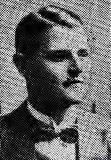
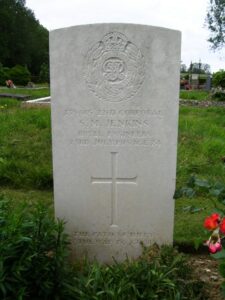
Thomas John, Company Sergeant Major, 23554, Welsh Regiment. Thomas was born in Kidwelly in 1882, the son of Levi and Mary John (nee Gower). The family had moved to Cardiff prior to 1891, where Thomas worked loading coal onto ships. He married Mabel Alice Parker in 1905. At the outbreak of war, Thomas enlisted at Cardiff into the 16th Battalion, Welsh Regiment. In December 1914 the battalion moved to Colwyn Bay, in 130 Brigade, 43rd Division, and on 29 April 1915 the formation became 115 Brigade, 38th Division. The Division had landed in France during December 1915 and had spent their first winter in the trenches near Armentieres. In June they marched south to the Somme, where they were tasked with the capture of Mametz Wood. The attack on the wood began on 7 July, but met with fierce resistance and Thomas was severely wounded, dying soon after. His grave could not be located after the war, and so Thomas is remembered on the Thiepval Memorial, France. A younger brother John, who was born at Cardiff, was killed in France on 5 October 1916. Neither men are commemorated at Kidwelly.

David Gravell Jones, Private, 10643, South Wales Borderers. David was born at Kidwelly in 1891, the son of John and Mary Jones (nee Gravell). He enlisted at Swansea into the 2nd Battalion, South Wales Borderers. The Battalion were stationed in China at the outbreak of war, and captured the German Garrison there at Tientsin, before being recalled to England. Here they joined 87 Brigade, 29th Division, and moved to Gallipoli via Egypt, landing on 25 April 1915. They remained here until evacuation to Egypt on 11 January 1916, and then moved to the Western Front on 15 March. The Division took part in its first major action in France during the 1916 Somme Offensive, and fought at the Battle of Albert. David was killed in action on 25 September 1916. He has no known grave, and so is remembered on the Ypres (Menin Gate) Memorial, Belgium. David is not commemorated at Kidwelly.
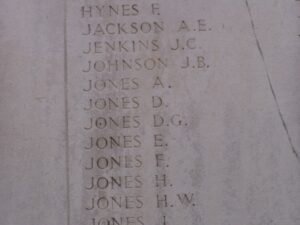
James Richard Tudor Jones, Second Lieutenant, Loyal North Lancashire Regiment. James was the son of James and Elizabeth Tyson Jones, of Hill House, Kidwelly. He enlisted into the Royal Army Medical Corps, and served with the regiment in France from 3 October 1915 until being commissioned into the 2nd Battalion, Loyal North Lancashire Regiment on 19 March 1918. The Battalion was attached to 94 Brigade, 31st Division, and at the beginning of 1918 was stationed in the St. Quentin sector. It was here that they were among the Divisions hit by the German Spring Offensive of 21 March 1918, at the Battle of St Quentin. The Division withdrew west, fighting at the First Battle of Bapaume, and then at the First Battle of Arras. After suffering terrible casualties the Division were moved to Flanders to rest, but in April the Germans launched an offensive in Flanders, and the Division were caught up in the fighting there, at the Battle of Estaires, and then at the Battle of Hazebrouck where they played a part in the Defence of Nieppe Forest. In August, 1918 the war turned in favour of the Allies, and the Division took part in the Advance in Flanders, which is where James was killed in action, aged 24, on 23 July 1918. He is buried at Raperie British Cemetery, Villemontoire, France.
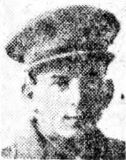
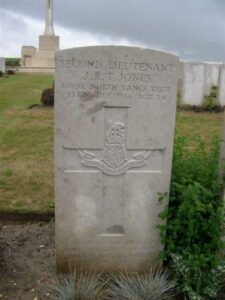
Mervyn Jones, Private, 24316, Royal Welsh Fusiliers. Mervyn was the son of David and Mary Ann Jones, of 33, Lady Street, Kidwelly, and he enlisted at Llanelli into the 13th Battalion, Royal Welsh Fusiliers. The Battalion formed part of 113 Brigade, 38th (Welsh) Division, and had moved to France during December, 1915, taking up the line near Fleurbaix. They had fought at Mametz Wood during the Battle of the Somme in 1916 and had moved to Ypres, fighting at The Third Battle of Ypres in 1917. On 21 March 1918, the German Spring Offensive smashed through the British lines on the Somme, and many British Battalions were virtually wiped out. The 38th Division was sent to the Somme from their positions near Armentieres to help reinforce the lines, and moved to the Somme a few days after the offensive had begun. Mervyn was killed in action here on 22 April 1918, aged 22. He has no known grave, and so is remembered on the Pozieres Memorial, France. His brother Oliver was killed just 6 months earlier in Palestine.
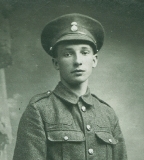
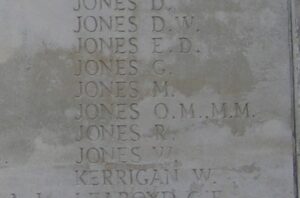
Oliver Jones, Private, 48144, Welsh Regiment. Oliver was the son of David and Mary Ann Jones, of Kidwelly, and enlisted at Llanelli into the Welsh Regiment. He was posted to the 24th Battalion, who had just been formed from the merger of the Pembroke and Glamorgan Yeomanry Battalions who were stationed in Palestine, and who made up part of 231 Brigade, 74th (Yeomanry) Division. The Division had marched into Palestine at the beginning of 1917 and had fought two pitched Battles at Gaza that year. Oliver was killed in action during the Third Battle of Gaza on 6 November 1917, aged 25, and is buried at Beersheba War Cemetery, Israel. Just 6 months later his brother Mervyn was killed on the Western Front.
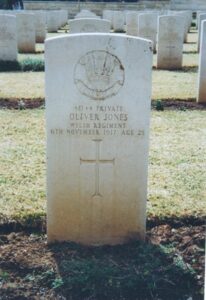
Samuel Jones, Lance Corporal, 14660, South Wales Borderers. Samuel was born in Kidwelly, the son of David and Margaret Jones. The family later lived at 21, Havelock Street, Llanelli. Samuel enlisted at Llanelli into the 5th Battalion, South Wales Borderers, which was attached to 58 Brigade, 19th (Western) Division. The Division assembled around Bulford during September 1914 and crossed to France during July 1915, remaining on the Western Front throughout the war. The Division fought at the Battle of Loos on 25 September 1915, and then moved to the Somme, where it took part in the second wave of the attack on Ovillers-La Boiselle on 1 July 1916, capturing the village at heavy cost, and fought through the Somme Battles of Pozieres and the Ancre in 1916. It then moved North to Ypres, taking part in the Battle of Messines, and then in the later fighting for the ridge. In the Spring of 1918 the division was caught up in the German Spring Offensive near Bapaume, where it suffered terrible casualties. The battered division moved back to positions near Messines to rest, but was caught up in the secondary German attack here the following month. After suffering terribly again, it was moved south to the quieter French sector to rebuild, but was caught up in the German offensive on the Aisne. After being rebuilt the division moved north to take part in the great offensive, and fought during the Battle of the Selle, Valenciennes, the Sambre and the Passage of the Grand Honelle. Samuel survived all of this terrible fighting and was accidentally killed on 2 December 1918, while attached to a unit of the Royal Engineers for Transport duties at Candas. He was 26 years old and is buried at Doullens Communal Cemetery Extension No. 2, France. The photo of Samuel is courtesy of Sarah Bassett.
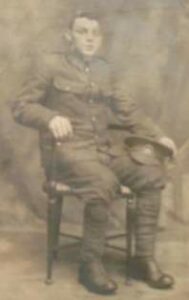
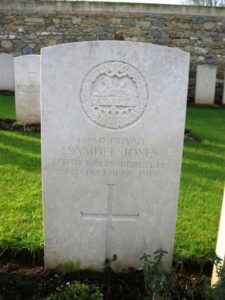
Charles Wyndham Lewis, Pioneer, 129892, Royal Engineers. Charles was born at Kidwelly in 1896, the son of Charles Rees Lewis and Anne Lewis (nee Thomas), of 22, Lady Street, Kidwelly. He enlisted at Llanelli into the Royal Welsh Fusiliers, but was later transferred to the Royal Engineers, and served with their ‘P’ Special Company. The Special Companies were the Gas Warfare, or Chemical Warfare Specialists of the British Army, and were charged with the handling and firing of Stokes Mortars. Charles was killed in action during the Third Battle of the Scarpe on 6 May 1917, and is buried at Beaulencourt British Cemetery, Ligny-Thilloy, France.
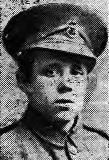
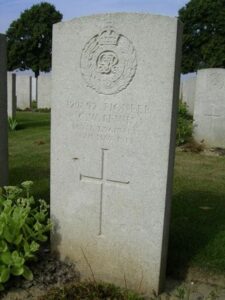
William Lewis, Able Seaman, J/42916, Royal Navy. William was born on 8 August 1896, the son of John Lewis and Margaret Lewis, of Panthowell, Mynyddygarreg. He enlisted into the Royal Navy on 18 August 1915 and after completing his training at HMS Vivid I, was posted aboard the destroyer HMS Magic, which was part of the Eleventh Destroyer Flotilla. William married Catherine Elizabeth Anthony of Nantgaredig House, Four Roads whilst on leave early in 1916 and Catherine later gave birth to their only child, a son, William Anthony Lewis. HMS Magic served at the Battle of Jutland on 31 May 1916, but luckily survived the great battle. On 10 April 1918 Magic was on patrol off Northern Ireland when she struck a German mine which exploded and blew off her bow. William was among 25 men killed in the explosion that day. The 21-year-old has no known grave and is commemorated on the Plymouth Naval Memorial, Devon.
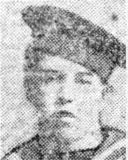
William Henry Lewis, Private, 13848, Welsh Regiment. William was born in Cardiff, the son of Edwin and Fanny Lewis. The family were residing at New Town, Kidwelly prior to 1906. He enlisted at Llanelli into the 2nd Battalion, Welsh Regiment, who were attached to 3 Brigade, 1st Division. The Division had been one of the first to arrive in France, fighting at the Battle of Mons, and taking part in the retreat to the Marne, where the Germans were stopped. They then fought at the Aisne, and at Chivy, before being moved north to Ypres. Here they fought at the First Battle of Ypres, where they again stopped the German Offensive, before wintering in Flanders. The following year saw them in action again at the Battle of Aubers, before moving South to Loos, where they fought during the Battle of Loos, and the action at the Hohenzollern redoubt. William was killed in action on 20 April 1916, at Loos. He is buried nearby at St. Patrick’s Cemetery, Loos, France. William is not commemorated locally.
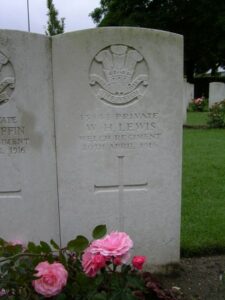
Arthur Jesse Lippiat, Private, 18718, Royal Welsh Fusiliers. Arthur was born on 18 September 1895, the son of Jesse and Caroline Lippiat, of 14, Watercress Road, Ashley Vale, Bristol. He resided in Kidwelly prior to the war, and enlisted there into the 16th Battalion, Royal Welsh Fusiliers, who were attached to 113 Brigade, 38th (Welsh) Division. The Division moved to France during December, 1915, taking up the line near Fleurbaix. They had fought at Mametz Wood during the Battle of the Somme in 1916 and had moved to Ypres, fighting at The Third Battle of Ypres in 1917. Arthur was killed in action at Langemarck on 1 September 1917. He was just 21 years old, and is buried at Bard Cottage Cemetery, Belgium. Arthur is not commemorated locally.
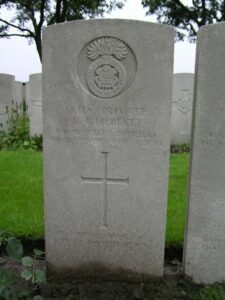
William John Lowe, Driver, M2/0/8835, Royal Army Service Corps. William was born at Lampeter in 1887, the son of William and Sarah Lowe, later of 16, Lady Street, Kidwelly. William served with the MT Section of the Army Service Corps as a Driver, While on active service in France, William developed an abscess on his left hip after a fall, and was hospitalised. He returned to service after recovering, but was admitted to hospital suffering from shell shock in August 1916, spending almost two months in hospital. Again William recovered, and was posted back out to France. On 4 May 1917 he was admitted to hospital again, after having suffered from gunshot wounds to his face and hands, which he had received during the Battle of Arras on 28 April. He spent a further 41 days in hospital recovering. William was then pensioned off, but died at home as a result of his wounds on 31 March 1919, aged 32. He is buried at Kidwelly (St. Mary) Churchyard.
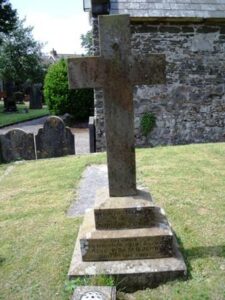
Andrew Wilfred Mansel, Private, Welsh Regiment. Andrew was born in 1895, the son of Thomas and Mary Jane Mansel (nee Jones), of 22, Gordon Terrace, Kidwelly. He enlisted into the Pembroke Yeomanry in February 1916, remaining on home service for the duration. He was discharged as medically unfit on 15 August 1917, suffering from pthisis. Andrew’s papers show that he was very unwell when he was discharged from the army, and he died at Kidwelly in the first quarter of 1918, aged just 22.
Thomas Martin, Private, 48867, Royal Inniskilling Fusiliers. Thomas was born at Enfield, Middlesex in 1895. By 1911 he was living at Kidwelly, where he worked as a farm labourer for Thomas Jones, of Forestfach, Kidwelly. Thomas served in France with the 2nd Welsh from 27 December 1914, and was later transferred to the 6th Battalion, Royal Inniskilling Fusiliers, which was attached to 151 Brigade, 50th (Northumbrian) Division. The division moved to France on 16 April 1915, and took part in the Second Battle of Ypres from April to June 1915. During the summer of 1916 the Division fought at the Battle of the Somme, then in 1917 fought at the Battle of Arras and at Third Ypres. During March 1918 they were stationed near St. Quentin, and were hit here by the German Spring Offensive of 21 March 1918, during the Battle of St Quentin, then at the later Battle of the Lys after being moved north to rebuild. The division suffered heavy casualties again during the Battle of the Aisne, before taking part in the great advance, fighting at the Battle of the St Quentin Canal, the Battle of Beaurevoir, the Battle of Cambrai, and then the Pursuit to the Selle, the Battle of the Selle and the Battle of the Sambre. Thomas was killed during the latter days of the war, on 7 November 1918. He was 24 years old, and is buried at Dourlers Communal Cemetery Extension, France, in grave I. B. 6. Thomas is not listed on the Kidwelly War Memorial.
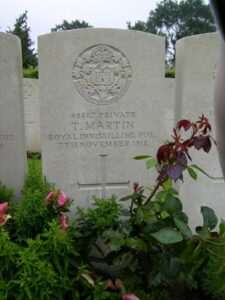
Thomas Miles, Private, 27433, Royal Defence Corps. Thomas was born at Carmarthen in 1862, the son of Moses and Margaret Miles. By 1891 he was working at Cardiff, then by 1901 was lodging with the Bish family at Merthyr Tydfil. At some time afterwards had found work as a coal hewer at Kidwelly, where he then resided, prior to taking up employment at Pembrey Munitions Works. Thomas enlisted into the Welsh Regiment at Merthyr on 17 December 1915, giving his age as 43, and he stated on his papers that he had undergone previous military service with the Military Police. He was posted to the North Staffordshire Regiment in April 1916, and was posted to Guernsey in November 1916, where the battalion became the 17th Battalion, Royal Defence Corps. Thomas remained at Guernsey for the remainder of the war, and was discharged on 14 December 1918, his address showing Tymawr, Water Street, Kidwelly. He then tried to get a war pension, and was examined at Kidwelly on 4 February 1919, after stating to the authorities that he had contracted asthma while sleeping with ‘no mattress and only two blankets’ at the Military camp at Barry Dock in the winter of 1916. Thomas’s papers aren’t clear if his application for pension was turned down or not, but he was obviously suffering, as he died at Kidwelly towards the latter part of 1919, aged 57. Nothing more is presently known of Thomas, pending further research.
David John Morgan, Private, 12532, Royal Welsh Fusiliers. David was the son of Thomas and Sarah Ann Morgan, of Ty Coch Cottages, Kidwelly. He enlisted at Llanelli into the 8th Battalion, Royal Welsh Fusiliers. The Battalion were attached to 40 Brigade, 13th (Western) Division. On 13 June 1915 the Division left for the Mediterranean, and moved to Alexandria. By 4 July 1915, all units had moved to Mudros, then landed at Cape Helles, Gallipoli between 6 and 16 July 1915, relieving the 29th Division. They left and returned to Mudros at the end of the month, and the entire Division landed at ANZAC Cove from 3 August 1915, taking part in the Battles of Sari Bair, Russell’s Top, and Hill 60, ANZAC. David was wounded at Gallipoli and transferred to a Hospital Ship waiting offshore. He sadly died of wounds aboard the ship on 30 October 1915, and was buried at sea. David is remembered on the Helles Memorial, Gallipoli. His uncle, Morgan, also fell. The photograph of David is courtesy of Kelly Wilds.

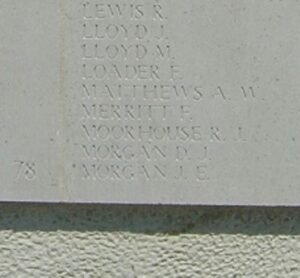
Morgan Morgan, Private, 13565, Welsh Regiment. Morgan was born in Kidwelly in 1883, the son of David and Amy Morgan. He lived with his wife Sarah Morgan at Bwlchnewydd, Trimsaran prior to the war, and enlisted at Llanelli into the 9th Battalion, Welsh Regiment. The Battalion was attached to 58 Brigade, 19th (Western) Division, which had assembled around Bulford during September 1914. Divisional training was completed near Tidworth, from March 1915, and the Butterfly Division crossed to France between 11 to 21 July 1915, moving to positions near Loos. The Division fought during the opening assault at the Battle of Loos, which is where Morgan was killed in action on 25 September, 1915. The battalion had taken part in a brave, but impossible charge across No Mans Land, in the face of well positioned German machine guns. Morgan and John Tucker of Kidwelly were killed, and Tom Lewis, Volin Jones, Sid Buist and Charlie Peck of Kidwelly were all wounded in the same charge. Morgan has no known grave, and is remembered on the Loos Memorial. His nephew, David, also fell.
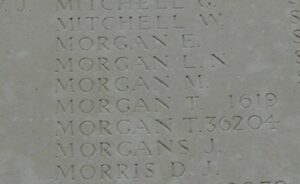
William John Morgans, Private, 53503, Welsh Regiment. William was the son of Thomas and Ann Morgans, of 26, Ferry Road, Kidwelly. He enlisted at Llanelli into the Pembroke Yeomanry, but later transferred into the 14th Battalion, Welsh Regiment, which were attached to 114 Brigade, 38th (Welsh) Division. The Division had landed in France during December 1915 and had spent their first winter in the trenches near Armentieres. In June they marched south to the Somme, where they famously captured Mametz Wood. The Division suffered terrible casualties at Mametz, and were taken out of the line, and moved to Ypres to rebuild, and it was during this period that William joined the battalion. Here the Division fought at Pilckem Ridge and Langemarck, before moving to the Armentieres sector. This is where William was wounded. He died of wounds aged 20, on 11 November 1917, and is buried at Estaires Communal Cemetery Extension, France.

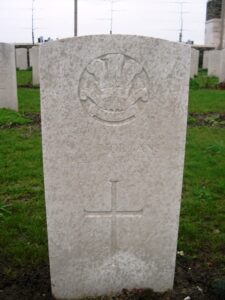
David Henry Parry, Master, Mercantile Marine. David was born at Kidwelly in 1866, the son of Goring Thomas Parry and Mary Ann Parry (nee Anthony). He served in the Mercantile Marine as Master of the SS Jose de Larnnaga. David was killed when the ship was torpedoed and sunk by a German U-Boat on 28 April 1917. He was 50 years old, and is remembered on the Tower Hill Memorial, London. David is not commemorated at Kidwelly.
Joseph Parry, Private, 15270, South Wales Borderers. Joseph was born at Bedwellty, Tredegar. He married Margaret Conniff at Kidwelly in 1906, the couple setting up home at 61, Priory Street, Kidwelly. He was a long serving veteran, and had served in the South African War of 1899-1901. He re-enlisted at Carmarthen into the South Wales Borderers from the reserve in 1914. Joseph went to France with the 1st Battalion, South Wales Borderers on 26 January 1915. Some time after he returned to Britain, where he was attached to the Depot Battalion. Joseph sadly died of sickness on 22 September 1918, aged 47, and is buried at Kidwelly (St. Mary) Churchyard. Many thanks to Diane Williams for the photograph.
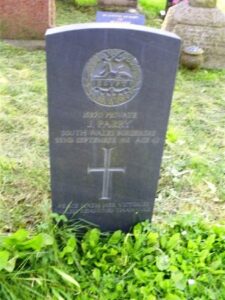
Francis Percy Campbell Pemberton, Captain, 2nd Life Guards. Francis was born at Gilling East, Yorkshire on 4 April 1885, the son of Reverend Thomas Percy Hudson and Sophia Patience Francis Hudson (née Campbell), of Trumpington Hall, Cambridge. Upon the death of her parents, Sophia became sole heir to the Pemberton estate, and the family assumed the surname of Pemberton. He was educated at Lovegrove and at Trinity College, Cambridge. When Francis came to age in 1906, his parents held the celebrations at the Muddlescombe Estate, where over 300 of their tenants attended. He was commissioned into the 2nd Life Guards on 12 February 1907. He married Winifred Mary Worsley, of 16, Prince’s Gardens, London, on 30 April 1912. Francis disembarked in France with the 2nd Life Guards on 8 October 1914. The unit spent the first weeks of the war on mobile reconnaissance duties, after joining the BEF at Ypres, attached to the 3rd Cavalry Brigade. The regiment was heavily involved in the First battle of Ypres, which raged from October to November 1914. Francis was killed in action at Moorslede on 19 October 1914, aged 29. His men were unable to recover his body, as they were retreating under a massed German attack. His body was, however, buried at some point, and he was re-interred after the war at Dadizeele New British Cemetery, Belgium. Francis is not commemorated on the Kidwelly Memorial.
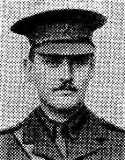
Frank Picot, Private, 1536, Australian Infantry. Frank was the son of the Reverend James Picot and Annie Le Brocq Picot, of King’s Road, St. Peters Port, Guernsey. He had been born at Kidwelly, but had later moved to Guernsey before emigrating to Australia, where he worked as a Farmer in Queensland. Frank enlisted at Queensland on 14 December 1914 and was posted to the 15th Battalion, Australian Imperial Force, who were attached to 4 Brigade, 1st ANZAC Division. Frank was sent with the 3rd reinforcements to his Battalion, who were by then in Egypt training, and he sailed with them in April 1915 for Mudros Island, from where they landed on Gallipoli. On 29 May 1915 Frank suffered a gunshot wound to his thigh. He was evacuated from Gallipoli and transported to the Army Hospital in Alexandria, where he died of wounds on 8 June 1916, aged 21. Frank is buried at Alexandria (Chatby) Military Cemetery, Egypt. Frank is not commemorated locally.
Thomas George Roberts, Private, 13540, Welsh Regiment. Thomas, known as George, was born at Pembroke. He resided at Kidwelly prior to the outbreak of war, where he worked as a groom for Colonel Young. George enlisted at Llanelli into the 9th Battalion, Welsh Regiment, which was attached to 58 Brigade, 19th (Western) Division. The Division assembled around Bulford during September 1914. Divisional training was completed near Tidworth, from March 1915, and the ‘Butterfly Division’ crossed to France between 11 and 21 July 1915, and moved to positions near Loos. The Division fought during the opening attack of the Battle of Loos, and then moved to the Somme, where they took part in the second wave of the attack on Ovillers-La Boiselle on 1 July, capturing the village at heavy cost, and fought through the Somme Battles of Pozieres and the Ancre in 1916. They then moved North to Ypres, taking part in the Battle of Messines. George was killed at Messines on 23 July 1917. He is buried at Locre Hospice Cemetery, Belgium.
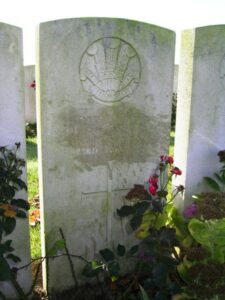
William John Roberts, Private, 35126, South Wales Borderers. William was born in Pembroke, the son of John Roberts. He resided at Kidwelly prior to the war, and enlisted at Llanelli into the 12th Battalion, South Wales Borderers, who were attached to 119 Brigade, 40th (Bantam) Division. This Division was formed between September and December 1915, composed of bantam units and others which had a mixture of regulation-height and shorter men, and moved to France during June 1916, taking positions near Givenchy, north of Loos. Late in 1916 they moved south to the Somme, and fought at the Battle of the Ancre, and remained in the area over the winter. In March 1917 the Germans withdrew to their shortened line, called the Hindenburg Line, and the 40th Division was one of the Divisions that followed the withdrawal. William was killed in action on 4 May 1917, in the Hindenburg Line area. He is buried at Fins New British Cemetery, Sorel-Le-Grand. William is not commemorated at Kidwelly.
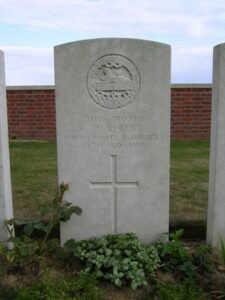
Thomas Rogers, Private, 20640, Welsh Regiment. Thomas was the son of David and Hannah Rogers, of 2, Singleton Terrace, Llansaint, Kidwelly. He was one of the original men who enlisted at Llanelli into the 15th Battalion, Welsh Regiment, who were raised as the Carmarthen Battalion, and trained at Rhyl. During 1915 the battalion moved to Winchester, and became part of 114 Brigade, 38th (Welsh) Division. The Division had landed in France during December 1915, and had spent their first winter in the trenches near Armentieres. In June they marched south to the Somme, where they famously captured Mametz Wood. The Division suffered terrible casualties at Mametz, and were taken out of the line, and moved to Ypres to rebuild. Thomas was killed in action here during a trench raid on 30 April 1917, aged 26. He is buried at Perth Cemetery (China Wall), Belgium. Thomas is not commemorated at Kidwelly.
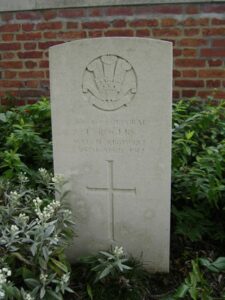
William Leslie Shenton, Acting Sergeant, 18731, Royal Welsh Fusiliers. William was born in Luton, Bedfordshire in 1899. By 1901 he was living with his Uncle and Aunt, William and Mary Smith, at Leek, Staffordshire, then by 1911 the family lived at Brickmakers Cottage, Trimsaran. William enlisted at Kidwelly into the 16th Battalion, Royal Welsh Fusiliers, who were attached to 113 Brigade, 38th (Welsh) Division. The Division had landed in France during December 1915 and had spent their first winter in the trenches near Armentieres. In June they marched south to the Somme, where they famously captured Mametz Wood. The Division suffered terrible casualties at Mametz, and were taken out of the line, and moved to Ypres to rebuild. Here they fought at Pilckem Ridge, where William was killed in action on 31 July 1917. He has no known grave, and so is remembered on the Ypres (Menin Gate) Memorial. William is not commemorated locally.
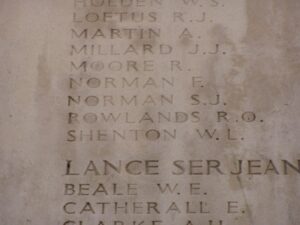
Alfred Oswald Stephens, Private, 63510, South Wales Borderers. Alfred was the son of David and Margaret Stephens, of Kidwelly. He enlisted there in September 1918 into the 3rd Battalion, South Wales Borderers. The battalion was the training unit for the regular SWB battalions. Sadly, Alfred was only in the army for two weeks, as he became ill, and died on 14 October 1918. Alfred is buried at Kidwelly (Siloam) Welsh Baptist Chapelyard.
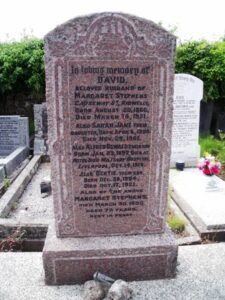
James Frederick Stokes, Private, 267163, Welsh Regiment. James was born in Smethwick in 1890, and resided in Kidwelly prior to the war, and married Mary Anne Evans early in 1914. He enlisted at Llanelli into the 1/6th Battalion, Welsh Regiment, who were Pioneers to the 1st Division. The Battalion had been in France since landing at Havre on 29 October 1914. Here they had been attached to the 28th Division, until moving to the 1st Division on 23 October 1915, and took part in the action at the Hohenzollern redoubt. They then moved south to the Somme, where they fought during the opening of the Somme Offensive at the Battle of Albert, then at Bazentin, Pozieres, Flers-Courcelette and Morval. They followed the German retreat to the Hindenburg Line in early 1917, and were then briefed for an operation on the Flanders Coast, and moved there during the summer of 1917. James was badly wounded here on 2 July 1917, and was carried onto a stretcher to be taken to a dressing station. He was dead by the time he reached there. James is buried at Ramscappelle Road Military Cemetery, Belgium. He left his widow Mary and two young daughters, Gladys and Violet May.
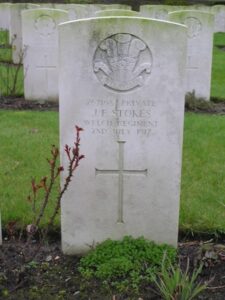
Archie Styles, Private, 45031, Welsh Regiment. Archie was the son of Charles and Emily Styles, of Old Shop, Mynydd y Garreg, Kidwelly. The family later moved to Crawley Down, Sussex, and Archie enlisted at Shoreditch into the army, and was posted to France in the summer of 1916, where he joined the 14th Battalion, Welsh Regiment. The Battalion was attached to 114 Brigade, 38th (Welsh) Division, and had landed in France during December 1915, spending their first winter in the trenches near Armentieres. In June they marched south to the Somme, where they famously captured Mametz Wood. The Division suffered terrible casualties at Mametz, and were taken out of the line, and moved to Ypres to rebuild. Here they fought at Pilckem and Langemarck, then moved to Armentieres, where they remained from September 1917 until March, 1918 when the German Spring Offensive was launched. The British had been over-run on the Somme, and so in April the Division was moved south, taking up positions North of Albert, where Archie was wounded. He died of wounds on 4 May 1918, aged just 21, and is buried at Harponville Communal Cemetery, France.
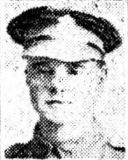
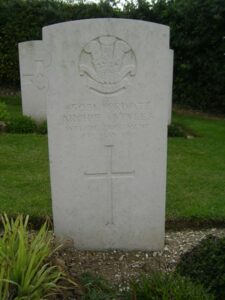
Stephen Sullivan, Private, 15773, Welsh Regiment. Stephen was the son of Christopher and Margaret Sullivan, of Neath. The family resided at 5, Gwendraeth terrace prior to 1911. Stephen enlisted at Llanelli into the 10th Battalion, Welsh Regiment, which was attached to 114 Brigade, 38th (Welsh) Division. The Division had landed in France during December 1915, spending their first winter in the trenches near Armentieres. In June they marched south to the Somme, where they took part in the capture of Mametz Wood. The Division suffered terrible casualties at Mametz, and were taken out of the line, and moved to Ypres to rebuild. Stephen was killed in action at Ypres on 30 March 1917. He was 24 years old and is buried at Bard Cottage Cemetery, Belgium.
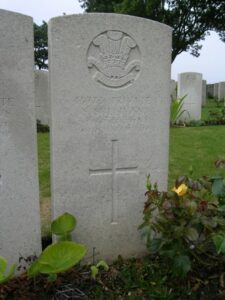
John Tucker, Private, 13406, Welsh Regiment. John was born in Llanybri in 1890. He lived with his sister, Sarah George and her husband, at 19, Lady Street, Kidwelly prior to 1911. John enlisted at Kidwelly into the 9th Battalion, Welsh Regiment, which was attached to 58 Brigade, 19th (Western) Division. The Division assembled around Bulford during September 1914. Divisional training was completed near Tidworth, and the Division moved to France during July 1915, taking up positions near Givenchy, north of Loos. The Division fought during the opening attack of the Battle of Loos, which is where John was killed in action on 25 September 1915, alongside his friend Morgan Morgan of Kidwelly. John is buried at Brown’s Road Military Cemetery, Festubert, France.
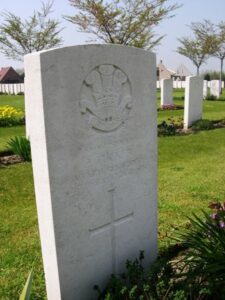
Edwin Vaughan, Private, 33694, South Wales Borderers. Edwin was born in Kidwelly in 1884, the son of James and Anne Vaughan. He enlisted at Cardiff into the 4th Battalion, South Wales Borderers, who were attached to 40 Brigade, 13th (Western) Division. The Division sailed for Alexandria on 13 June 1915, then by 4 July 1915, moved to Mudros, preparatory for landing on Gallipoli. They landed between 6 and 16 July 1915 at Cape Helles, and relieved the 29th Division. They left and returned to Mudros at the end of the month, and the entire Division landed at ANZAC Cove between 3 and 5 August 1915, taking part in the Battles of Sari Bair, Russell’s Top, and Hill 60, ANZAC. Soon afterwards the Division was transferred from ANZAC to Suvla Bay, and it was evacuated from Suvla on 19 December 1915, whereupon the infantry moved after a weeks rest to the Helles bridgehead, where they faced the last Turkish attacks at Helles. On 8 January 1916, the Division was evacuated from Helles, and by 31 January was concentrated at Port Said, where they held forward posts in the Suez Canal defences. On 12 February 1916 the Division began to move to Mesopotamia, to strengthen the force being assembled for the relief of the besieged garrison at Kut al Amara. By 27 March 1916, the Division had assembled near Sheikh Saad and came under orders of the Tigris Corps, and then took part in the attempts to relieve Kut. However, after these efforts failed and Kut fell, the British force in the theatre was built up and reorganised. The Division then fought at the Battle of Kut al Amara, then at the capture of the Hai Salient and the capture of Dahra Bend. Edwin was killed in action here during the Battle of ‘The Boot’ at Band-i-Adhaim on 30 April 1917. He has no known grave, and so is remembered on the Basra Memorial, Iraq. Edwin is not commemorated locally.
Albert Edward Ward, Private, 235597, Royal Welsh Fusiliers. Albert was born in Kidwelly, the son of William and Sarah Ann Ward. The family later moved to The Cottage, Pontardulais. Albert married Florence Ellis at Pontardulais on 4 July 1914, and the couple moved to 3, Upper Lime Street, Gorseinon, Swansea. He enlisted at Gorseinon into the South Wales Borderers, but later transferred into the 17th Battalion, Royal Welsh Fusiliers, who were in France attached to 113 Brigade, 38th (Welsh) Division. The Division had been in France since December 1915 and had captured Mametz Wood during July 1916, before moving to Ypres. On 31 July 1917 the 38th Division launched its attack on the Pilekcm Ridge, and took part in the following Battle of Langemarck before being moved to the Armentieres sector for the winter. On 21 March 1918, the German Spring Offensive was launched, and the British were over-run on the Somme, and so in April the 38th Division was moved south, taking up positions North of Albert, from where they weathered the storm of the coming months, until the war turned during the Battle of Amiens, on 8 August 1918. The Germans had now lost the upper hand, and the British regained the lost ground on the Somme after an attack which began on 21 August 1918, with the 38th Division launching an offensive north of Albert, driving the Germans eastwards over the coming days. Then the move began towards the mighty Hindenburg Line, and the Division carried on with their march east, fighting at the Battle of Havrincourt, and the Battle of Epehy. A short rest period ensued, during which time the Canal du Nord was breached, so opening a passage through the Hindenburg Line. The Division then fought at the Battle of Beaurevoir, and moved up towards Cambrai, capturing Villers-Outreaux, before advancing to the Selle and onto the Sambre. Albert was killed in action at the Battle of the Sambre on 4 November 1918. He was 33 years old and is buried at Englefontaine British Cemetery, France. A touching note at the base of Albert’s gravestone reminds us of the human cost, and says ‘From his three children.’ Albert is not commemorated at Kidwelly.
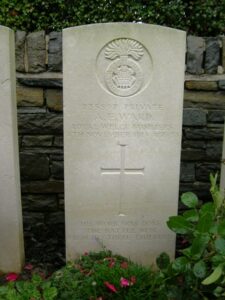
Ernest Wild, Private, 108756, Machine Gun Corps. Ernest was the son of Thomas and Sarah Wild, of Angel House, Kidwelly. He enlisted at Carmarthen into the Monmouth Regiment, but later transferred into the 33rd Company, Machine Gun Corps, who were attached to the 11th (Northern) Division. On 1 July 1915, the Division sailed from Liverpool, landing at Alexandria, before moving on to Mudros, completing concentration by 28 July 1915. They landed at Suvla Bay, Gallipoli on 7 August 1915, and remained there until the evacuation on 21 December 1915, when they moved to Egypt. During July 1916 the Division landed at Marseilles, and then spent remainder of the war on the Western Front, fighting at the Battle of Flers-Courcelette during the Somme Offensive, and spending the winter on the Ancre. In June 1917 the Division took part in the Battle of Messines, and then fought at the Battle of Langemarck during the Third Battle of Ypres. At the end of September they fought at the Battle of the Polygon Wood, then at the Battle of Broodseinde and the Battle of Poelcapelle. After the Passchendaele Offensive had been closed down, the Division remained in Flanders for the coming months. On 21 March 1918 the Germans attacked the British lines on the Somme, and days later switched the attack to Flanders. Ernest was killed in action in Flanders on 13 April 1918. He was 22 years old, and has no known grave, and so is remembered on the Ploegsteert Memorial, Belgium.
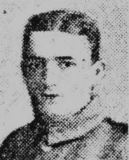
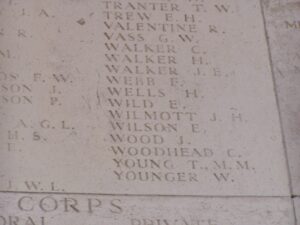
Norman Hadley Williams, Private, 3211, Welsh Guards. Norman was born in Cradley, Staffordshire in 1890, the son of Frank and Fanny Williams. The family were living at Kidwelly prior to 1901. Norman married Maria Jane Evans at Kidwelly in September 1916, after having enlisted into the 1st Battalion, Welsh Guards. The Welsh Guards were raised by Royal Warrant of 26 February 1915, and were stationed at White City, and on 18 August 1915, landed at Havre, and were attached to 3rd Guards Brigade, Guards Division. This Division has the distinction of being formed in France in August 1915. The various Guards units that had been with other Divisions were withdrawn to be brought together to create this fine formation. It remained on the Western Front throughout the war and saw its first major action during the Battle of Loos on 25 September 1915, remaining in the area during the coming months, where they also fought in the subsequent Action of Hohenzollern Redoubt. In July, 1916 the Division moved to the Somme, where they fought at the Battle of Flers-Courcelette, and then at the Battle of Morval, capturing Lesboeufs Village. They remained here for the winter, and in March 1917 took part in the advance caused by the German Retreat to the Hindenburg Line. Later that year they moved north to Ypres, where they fought at the Battle of the Pilckem Ridge. This is where Norman was killed in action on 5 August 1917. He is buried at Artillery Wood Cemetery, Belgium.
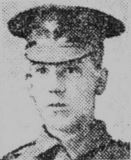
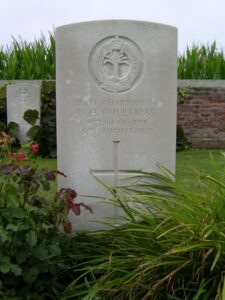
World War Two, 1939-1945
Reginald Arthur Anstee, DCM, Sergeant, 2031345, Royal Welch Fusiliers. Reginald was the son of Arthur and Olive May Anstee, and the husband of Ethel Annie Anstee, of Hull. He served with the 7th Battalion, Royal Welch Fusiliers, who were attached to the 53rd (Welsh) Division. The Welsh Division had landed in Normandy after the main landings, by 28 June 1944. They fought their way through Normandy, and up through Northern France, through Belgium and Holland into Northern Germany over the coming months, and fought a great Battle on the Dutch/ German border, at the Reichswald Forest. Reginald was killed in action on 28 March 1945, aged 29, and is buried at Reichswald Forest War Cemetery, Germany. His Distinguished Conduct Medal was posthumously Gazetted on 10 April 1945.
John Thomas Collins, Lance Sergeant, 4198756, Royal Welch Fusiliers. John was the son of Alfred and Janet Collins, of Kidwelly, and served with the 4th Battalion, Royal Welch Fusiliers. The Battalion landed at Normandy at the end of June as part of 158 Brigade, 53rd (Welsh) Division, and took part in the heavy fighting around Caen and into the Bocage. John was killed in action in the Bocage on 13 August 1944, aged 27, and is buried at Brouay War Cemetery, France.
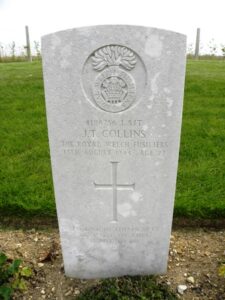
David Daniel Evans, Private, 5392452, Oxford and Bucks Light Infantry. David was the son of Ivor and Ada Evans, of Kidwelly, and served with the 7th Battalion, Oxfordshire and Buckinghamshire Light Infantry, who where attached to 167 Infantry Brigade. The Battalion fought throughout the campaign in the Western Desert, and entered Tunis on 7 May 1943 after the successful Battles of El Alamein had virtually wiped out the German Afrika Korps. David was killed in action on 9 May 1943, aged 29, and is buried at Enfidaville War Cemetery, Tunisia. Daniel is not commemorated at Kidwelly.
Richard Lewis Evans, Fusilier, 4197438, Royal Welch Fusiliers. Richard was the son of James and Hannah Evans, of Kidwelly, and served with the 1st Battalion, Royal Welch Fusiliers. The Battalion had been decimated during the Battle of France, and in the epic retreat to Dunkirk in 1940. After the remnants had been evacuated, they rebuilt in the UK, and in 1942 sailed for the Far East. At the end of May 1942 they reached India, and from then on fought against the Japanese, moving into Burma. In 1944 the Japanese crossed the Chindin, and the RWF were sent into battle around Kohima. Richard was killed during the resulting battle, on 5 May 1944, aged 26, and is buried at Kohima War Cemetery, Burma. Richard is not commemorated at Kidwelly.
William Elwyn Evans, Ordinary Seaman, D/JX 152289, Royal Navy. William was the son of William and Rachel Anne Evans, of Kidwelly. He served with the Royal Navy, aboard the aircraft carrier H.M.S. Glorious. Glorious had started life as a Battlecruiser, but had been converted to an aircraft carrier during the 1920’s. After the start of the Second World War, Glorious spent the rest of 1939 hunting for the German cruiser Admiral Graf Spee in the Indian Ocean before returning to the Mediterranean. She was recalled to home waters in 1940 to support British operations in Norway. On 8 June 1940 Glorious was leaving Norway to ferry aircraft back to Britain when she was attacked and sunk by the German battleships Scharnhorst and Gneisenau in the North Sea with the loss of over 1,200 lives. William was 18 years old when he died that day, and is commemorated on the Plymouth Naval Memorial, Devon. William is not commemorated at Kidwelly.
Alec Gravelle, Leading Aircraftman, 1869547, Royal Air Force Volunteer Reserve. Alec was the son of Llewelyn and Mary Ann Gravell, of Kidwelly, and served with 148 Squadron, RAFVR. The Squadron flew the Boeing B-24 Liberator VI, and were based at Foggia in Italy after the Allied invasion. Alec died in Italy on 9 July 1945, aged just 20, and is buried at Bari War Cemetery.
Kenneth Hawkins, Private, 5193672, York & Lancaster Regiment. Kenneth was the son of Charles and Mary E. Hawkins, of Kidwelly, and served with the 6th Battalion, York & Lancaster Regiment. The 6th Battalion went to France in 1940 with the 46th Infantry Division, and experienced heavy fighting in the St. Omer/ La Bassee area. In 1942 the Division was part of the First Army in Tunisia, and from 1943 until the end of the war they fought with the Eighth Army in Italy, from Salerno to Rimini. Kenneth was killed on 10 September 1943, aged just 20, and is buried at Salerno War Cemetery, Italy.
David Andrew Hudson, Able Seaman, D/JX 154807, Royal Navy. David was the son of Thomas and Mary Ann Hudson, of Kidwelly, and served in the Royal Navy aboard H.M.S. Gloucester. She was a Town Class Cruiser, which in September 1939 was flagship of the 4th Cruiser Squadron, serving in the East Indies. She spent the rest of that year patrolling the Indian Ocean. In December, she was moved to Simonstown, South Africa where she was used, unsuccessfully, against German raiders. She was transferred again in May 1940, this time to the Mediterranean, where she experienced plenty of action. She was involved in Malta convoys and the Battle of Calabria on 9 July 1940. An Italian air attack on 8 July had hit the ship’s bridge killing or wounding most of the bridge personnel, including the Captain. The second half of 1940 was spent in the eastern Mediterranean and in the Aegean. On 11 January 1941, while supporting Operation Excess, Gloucester was hit by a bomb which failed to explode. In March, she was at the Battle of Matapan and, in April, performed several bombardments along the north African coast. A second bomb hit caused minor damage. Gloucester formed part of a naval force acting against German military transports to Crete, with some success. On 22 May 1941, while in the Kithera Channel, about 14 miles north of Crete, she was attacked by German Stuka dive bombers and sank, having sustained at least four heavy bomb hits and three near-misses. 723 lives were lost, with just 82 survivors. Her sinking is considered to be one of Britain’s worst wartime naval disasters. David was one of the men lost that day, aged only 18, and is remembered on the Plymouth Naval Memorial, Devon.
Edwin James Jarvis, Aircraftman 1st Class, 1120160, Royal Air Force Volunteer Reserve. Edwin was the son of George William Jarvis and Elizabeth Jarvis, of Pistyllnewydd, Mynyddygarreg, Kidwelly. He served with 936 Balloon Squadron, Royal Air Force, which was a coastal defence unit, based around Newcastle-upon-Tyne. Edwin was killed at Newcastle on 26 July 1941, probably during a German air raid. He was 34 years old, and is buried at Pen-Y-Graig Congregational Chapelyard Extension, Wales. Edwin is not commemorated at Kidwelly.
Robert Glyn John, Ordinary Seaman, D/JX 167980, Royal Navy. Robert was the son of Robert Daniel John, and of Ida Agnes John, of Kidwelly, and served in the Royal Navy aboard H.M.S. Hunter. Hunter was an ‘H’ Class Destroyer, and during the First Battle of Narvik on 10 April 1940, Hunter and five other H-class boats of the 2nd Destroyer Flotilla attacked the German destroyers that had transported German land forces to occupy Narvik in northern Norway the previous day. The flotilla was engaged by German destroyers in the Ofotfjord at the entrance to the harbour and sank the destroyers Wilhelm Heidkamp and Anton Schmidt, heavily damaged Diether von Roeder and inflicted lesser damage on two others. Seven German or German-seized transport ships were also sunk. As the British flotilla turned to leave, it was engaged by three German destroyers emerging from the Herjangsfjord and then by two more coming from Ballangen Bay. In the ensuing battle, the British flotilla leader HMS Hardy was badly mauled and had to be beached in flames, while Hunter sank after receiving heavy fire and colliding with HMS Hotspur. Robert was killed in the sinking of the Hunter on 10 April 1940, aged just 21, and is remembered on the Plymouth Naval Memorial, Devon.
Alfred Ivor Johns, Sergeant (Air Bomber), 1837104, Royal Air Force Volunteer Reserve. Alfred was the son of George and Margaret Ann Johns, and the husband of Megan Johns, of Burry Port, and he served with 102 Squadron, RAFVR, who flew the Handley Page Halifax III, based at Pocklington in North Yorkshire. On the night of 5 January 1945, Alfred’s Squadron took part in a massed Bomber Raid on Hannover, Germany. Alfred was killed when his Halifax was shot down over Germany on the raid that night. He was 31 years old, and is buried at Hanover War Cemetery, Germany.
Adolph Frederick Jones, Guardsman, 2737008, Welsh Guards. Adolph was the son of Thomas and Sarah Jones, of Kidwelly and served with the 3rd Battalion, Welsh Guards. The Battalion served throughout the campaigns in Tunisia and Italy. Adolph was killed on 2 October 1944, aged 31, and is buried at Santerno Valley War Cemetery, Italy. Adolph is not commemorated at Kidwelly.
Thomas King, Ordinary Seaman, P/JX. 253120, Royal Navy. Very little is known of Thomas, but he was the son of Mary Ann King, of Canning Town, London and served with the Royal Navy. He died at Llanelli on 4 April 1942, aged 34. He is buried at Burry Port Cemetery.
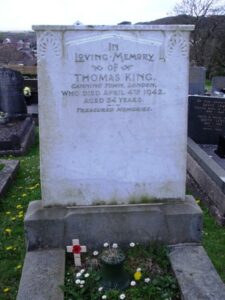
Arthur Hugh Wilson Lewis, Private, 14627373, Black Watch (Royal Highlanders). Arthur served with the 6th Battalion, Black Watch, who had fought in France during 1939 and 1940 as part of the BEF. After evacuation to the UK they rebuilt, and were moved to North Africa, where they fought throughout the Campaign there, until taking part in the Invasion of Italy. Arthur was killed here on 8 June 1944, aged just 19, and is buried at Bolsena War Cemetery, Italy.
Owen Thomas Dunne Locke, Marine, PLY/X 101541, Royal Marines. Owen was the son of William James Locke and Margaret Susan Locke, of Kidwelly, and served in the Royal Navy aboard H.M.S. Repulse. Repulse had been built during WW1, and had taken part in the Second Battle of Heligoland Bight in 1917. She was upgraded during the inter war years, and at the outbreak of war was stationed in the Mediterranean. She saw action during the Battle of Norway in 1940, and took part in the chase for the Bismarck, and in December 1941 was sent to the Pacific as part of ‘Force Z’. At the end of 1941, as the threat of war with Japan loomed ever larger, Repulse was detached to the Far East as a deterrent to Japanese aggression. This force, long envisioned in Admiralty strategic planning as a large battle fleet designed to act as a Fleet-in-being and as a counter to Japanese intentions, eventually was despatched to Singapore as an under-strength squadron. Its inability to act as a deterrent would soon be exposed. The squadron was sent without the planned for aircraft carrier to Singapore. Shortly after the outbreak of war in the Pacific, on 8 December 1941, Repulse left Singapore in company with the other major element of the Eastern Fleet, the fast battleship Prince of Wales, and four destroyers, to try and intercept Japanese invasion convoys heading towards Malaya. The commander of the fleet, Admiral Sir Tom Philips, flying his flag in Prince of Wales, knew that British forces could not guarantee to provide air cover for his forces, but elected to proceed anyway because he thought that Japanese forces could not operate so far from land, and that his ships were immune from fatal damage via air attack. On 10 December 1941, after failing to find any Japanese invasion forces, the fleet turned south, and Japanese aircraft were spotted. They were then attacked by 86 Japanese aircraft from the 22nd Air Flotilla based in Saigon, which attacked both Prince of Wales and Repulse. In the ensuing attacks, Repulse managed to avoid several torpedo attacks, but was caught by a Japanese pincer attack and hit by four torpedoes in rapid succession, fatally crippling her. Within minutes it became clear that she was sinking, so orders were given to abandon ship. Repulse finally rolled over and sank at 12.23. The survivors were rescued and dropped off at Singapore. Owen died of wounds on 22 February, 1942, aged 28, and is remembered on the Plymouth Naval Memorial, Devon.
Thomas James Rogers, Sergeant (Air Gunner), 1852120, Royal Air Force Volunteer Reserve. Thomas was born in 1915, the son of Thomas Rogers, and of Mary Rogers, of Kidwelly, and served with 424 (R.C.A.F.) Squadron, RAFVR, who flew the Handley Page Halifax III, based at Skipton-on-Swale. On the night of 30 March 1944, the Squadron took part in a massed bomber attack over Nuremberg. Thomas was killed when his Halifax was shot down over Germany during the return journey, on 31 March 1944, and is buried at Hanover War Cemetery, Germany.
Trevor Rogers, Able Seaman, D/JX 178503, Royal Navy. Trevor was born in 1919, the son of Thomas and Mary Rogers, of Kidwelly, and served with the Royal Navy, aboard H.M.S. Galatea. She was an ‘Arethusa Class’ Light Cruiser, which had joined the Mediterranean Fleet on commissioning and acted as flagship, Rear Admiral (Destroyers). After the outbreak of war she was ordered home, and between February and March 1940 she took part in the operations to intercept Axis merchantmen attempting to break out of Vigo. In April 1940 she was involved in the Norwegian campaign, and in May joined the Nore Command as Flagship of the 2nd Cruiser Squadron. On 4 April 1940, the Polish destroyers Burza, Grom and Blyskawica reached their new home base Rosyth. In the afternoon they left the harbour with Galatea, her sister ship Arethusa and three destroyers. They were ordered to conduct a patrol in the North Sea and were later ordered to intercept German invasion groups heading for Norway. On 1 September 1940 Galatea struck a mine, and was under repair until May 1941, when she was involved in hunting the Bismarck operations. In July 1941 she joined the Mediterranean Fleet via the Red Sea, and by November was based at Malta with Force “K”, operating against the Axis supply convoys to North Africa. On 14 December 1941, shortly before midnight, Galatea was torpedoed and sunk by the German submarine U-557 off Alexandria, Egypt. Her Captain, 22 officers and 447 ratings were killed. Some 100 survivors were picked up by the destroyers HMS Griffin and HMS Hotspur. Trevor was one of the unlucky men killed when the ship was lost on 15 December 1941. He was just 21 years old, and is remembered on the Plymouth Naval Memorial, Devon.
William Glanville Thomas, Lieutenant, EC/9637, Indian Army. William was born at 41 Water Street, Kidwelly on 14 April 1922, the son of Benjamin Thomas and Sarah Thomas. The family then moved back to his mothers home town of Carmarthen, and moved into 36, Spilman Street, Carmarthen. After leaving Carmarthen Grammar School, William enlisted into the army and was commissioned as an officer into the Indian Army on 12 December 1942, before being posted to the 7th Battalion of the 9th Jat Regiment. The regiment saw much action during the war, taking part in the campaigns in North Africa, Ethiopia, Burma, Malaya, Singapore, and Java-Sumatra. William died in India on 12 September 1944. He was 22 years old and is buried in Delhi War Cemetery, India. He is not commemorated on the Kidwelly Memorial.
Leslie Walters, Sapper, 1905896, Royal Engineers. Leslie was the son of William and Elizabeth Walters, of Kidwelly, and the husband of Pat Walters. He served with the 11th Field Company, Royal Engineers, who had formed part of the invasion force that landed at Normandy during June 1944. Leslie was killed during the advance through Holland on 19 September 1944 aged 26, and is buried at Bergen-Op-Zoom War Cemetery, Netherlands.
Thomas Edwin Jones Williams, Private, 14739353, Welch Regiment. Thomas is shown on the memorial as E. Thomas Williams. He was the son of Mrs A. Williams, of 51, Lady Street, Kidwelly. He enlisted into the local Territorial unit, the 4th Battalion, Welch Regiment, which was attached to the 53rd (Welsh) Division. The division spent most of the war on home service, first in Northern Ireland, before returning to England to prepare for the Normandy landings, and landed in Normandy at the end of June 1944. It took part in the operations to break out from Normandy, before taking part in the drive through France and Belgium into Holland. By the beginning of March 1945 the division had crossed into Germany and was in position in the area of Issum, preparing to attack Alpon, which would open up the advance on the Rhine. The attack began on 4 March, and heavy opposition was encountered, with the German 21st Parachute Regiment putting up a staunch defence. Thomas was killed on 7 March 1945 as the 53rd Division was being relieved. He was 19 years old, and is buried in Reichswald Forest War Cemetery, Germany.
Recent Additions (New Plaque Fixed on 2013)
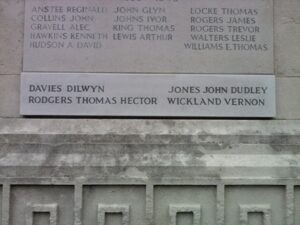
Strangely, despite the omission of several Kidwelly men from the memorial (see above), in 2013 an additional plaque was mounted onto the Kidwelly Memorial, which contains the names of four men from nearby Llansaint who fell during the Second World War. These men are already commemorated on the own memorial at Llansaint. Due to the addition of this plaque in Kidwelly, their details are shown below. It would be a worthwhile move to ensure that the several men who are not commemorated on the Kidwelly Memorial, who were actually from the town, would receive the privilege of being added to the memorial.
Delwyn Davies, Marine, PLY/X 108897, Royal Marines. Delwyn was the son of Bertie and Olive Davies, of Llansaint. He served with the Royal Marines. On the night of 25 April 1943, Delwyn was aboard H.M. Landing Craft Gun (L.C.G.) 15, which, together with H.M.L.C.G. 16, were being delivered from the Harland and Wolff shipyard in Belfast, to Falmouth. The two craft contained a total of seventy nine sailors and Royal Marines, but a gale blew up, and the craft began to get into trouble. They reached the entrance to Fishguard Harbour, but were refused permission to enter, and so headed southwards towards Milford Haven and safety. However, as they rounded St. Ann’s Head, the conditions worsened, and the vessels began taking on water faster that the pumps could handle, and so they radioed for help. The coastguard called the Angle lifeboat, only to be told that it was out of commission. Six hours went by before the St David’s lifeboat was eventually called out. It took them two and a half hours to reach the crafts, by which time it was dark and nothing could be done. The two craft separated and the L.C.G.15 sank on 25 April 1943. The old fishery protection vessel HMS Rosemary was also on her way, and upon reaching the remaining Landing Craft, L.C.G.16, launched her lifeboat. The six sailors aboard drowned trying to reach the Landing Craft, as the lifeboat overturned in rough seas. The L.C.G.16 soon sank herself with the loss of all hands. Some of the bodies were washed ashore in Freshwater Bay in the coming days, and were buried in various cemeteries, many at Milford. Several bodies were never found, and the sites have been classed as war graves. Delwyn was just 18 years old when he died on the night of 25 April 1943. His body was recovered, and he is buried at Llansaint (Seion) Calvinistic Methodist Cemetery. He is commemorated alongside his friends on a memorial overlooking Freshwater Bay (see the Pembrokeshire War Memorial site).
John Dudley Jones, Lance Corporal, 4209253, Royal Welch Fusiliers. John was the son of Hannah Jane Jones, of Minyrafon, Llansaint. He served with the 7th Battalion, Royal Welch Fusiliers, which was attached to 158th Infantry Brigade, 53rd (Welsh) Division. The Division was a Territorial unit, and had been on home service for most of the war, before landing on the Normandy beaches at the end of June 1944. After taking part in the break out from the Normandy beach-head, the division took part in the closing of the Falaise Pocket before moving northwards through Belgium and Holland towards Germany. The division, as part of XXX Corps, then took part in Operation Market Garden, and in the Battle of the Bulge later that year. John was killed in Germany on 15 April 1945, aged 23. He is buried in Becklingen War Cemetery, Germany.
Thomas Hector Rogers, Private, 14716877, Welch Regiment. Thomas was the son of John and Sarah Ann Rogers, of Llansaint. He served with the 1/5th Battalion, Welch Regiment, which was attached to 158th Infantry Brigade, 53rd (Welsh) Division. The Division was a Territorial unit, and had been on home service for most of the war. On 27 June 1944 the advance party of the 53rd (Welsh) Division landed at Jug Beach, Normandy, and after taking part in the break out from the Normandy beach-head, the division took part in the closing of the Falaise Pocket (where Tasker Watkins of the 1/5th Welch won the Victoria Cross), before moving northwards through Belgium and Holland towards Germany. The division, as part of XXX Corps, then took part in Operation Market Garden. Thomas was killed in action during heavy fighting in Netersel, towards the closing days of Operation Market Garden, on 24 September 1944. He was just 18 years old, and is buried in Bergen-Op-Zoom War Cemetery, Netherlands.
Samuel Vernon Wickland, Flight Sergeant, 640170, Royal Air Force. Samuel was born at Llansaint in 1921, the son of Joseph James Wickland and Elizabeth Jane Wickland (nee Samuel). Samuel married Ivy Gamble, of Greenwich, London in 1942. He served as an Air Gunner with 61 Squadron, Royal Air Force, which was a heavy bomber squadron, equipped with the Avro Lancaster. On the evening of 23 September 1944, Samuel took off from RAF Skellingthorpe aboard Lancaster ND988, which was attached to a force ordered to bomb the Dortmund-Ems Canal at Ladbergen near Munster. The Lancaster was shot down and crashed at 23:30 at Wechte, about two miles from Tecklenburg. Samuel was one of six of her crew killed in the crash; there was only one survivor. Samuel was 23 years old, and is buried alongside his fellow crewmen in Reichswald Forest War Cemetery, Germany.